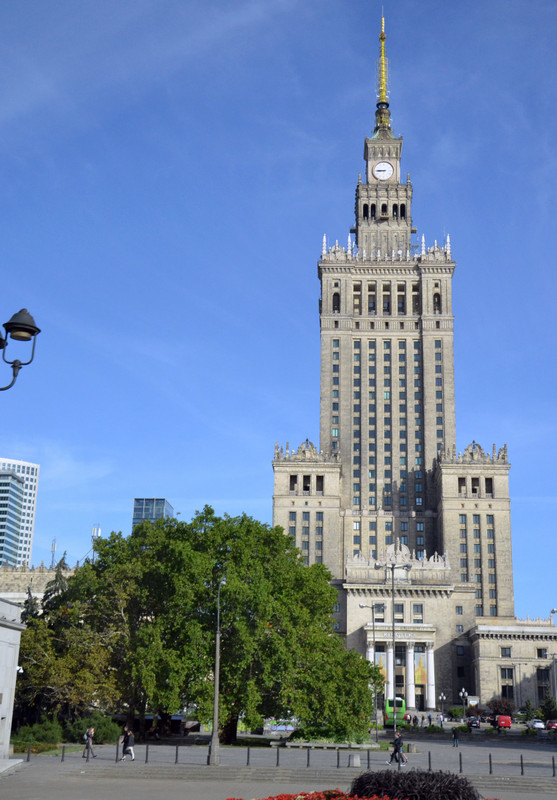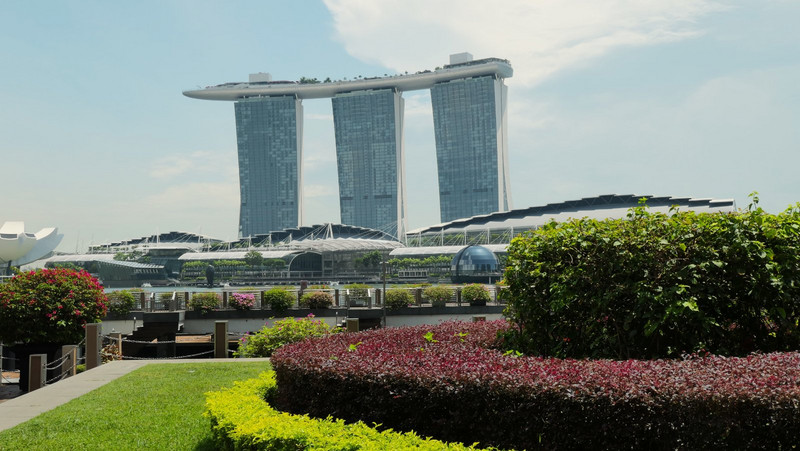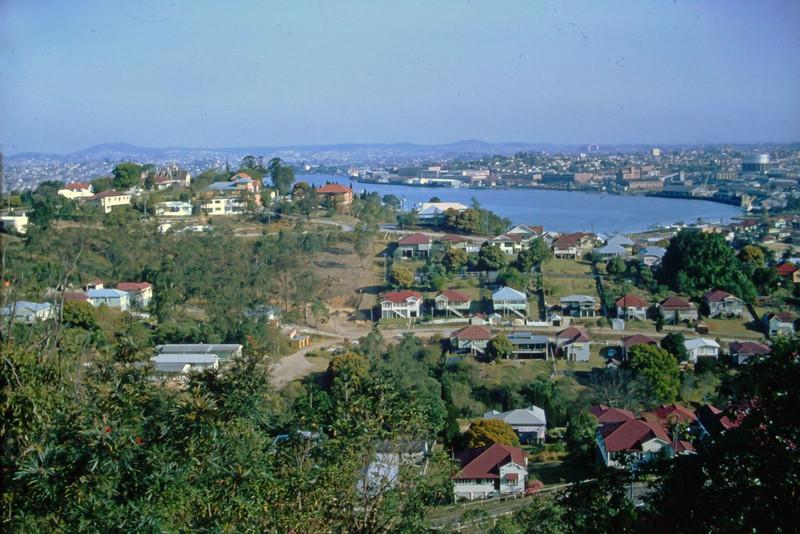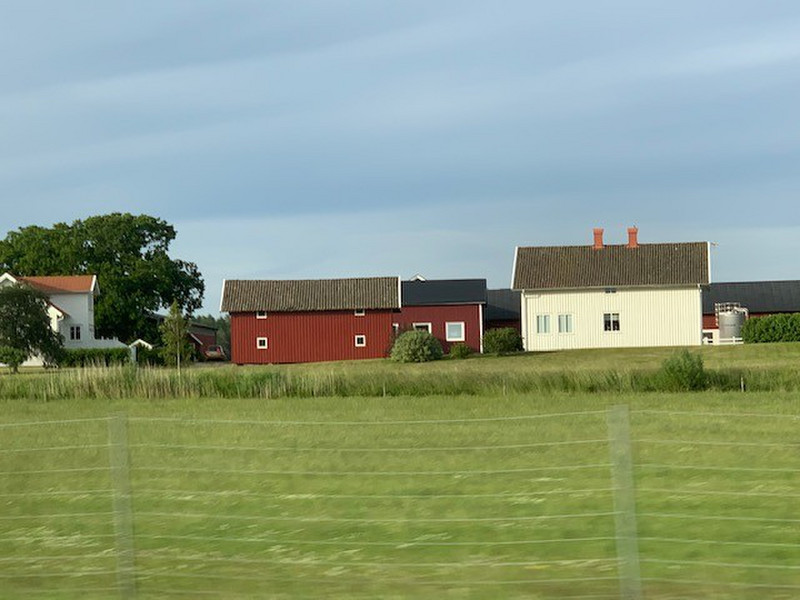Palace of Culture and Science - Pałac Kultury i Nauki or PKIN. Designed by Soviet architect Lev Rudnev. Built in in a mix of Art Deco and Socialist Realism styles. Plac Defilad 1. DSC_0256p1
Today we had our formal Collette coach tour of Warsaw. We started at Łazienki Park. It was originally a royal preserve laid out with palaces and monuments. It became a public park for Warsaw in 1918. Many interesting items were to be found here. At the entrance, a monument honors Jzef Piłsudski a leader in the Polish independence movement and twice head of state. (His Cadillac is displayed, too.) Overlooking a pond is the Chopin Designed in 1926, it depicts him under a willow tree. Nearby in this musical corner of the park is a bust of Franz List. From the musicians corner, the group began a walk through the park to the Łazienki Palace, stopping to admire the Old Orangery. The Łazienki Palace, or Palace on the Water (Pałac na Wodzie), was built beginning in 1772 on an island in an artificial lake. It served as the summer residence for Stanisław August Poniatowski, Polans last king. It is a Neoclassical structure in a picturesque setting. Both the north and south faade face the lake while the sides are each connected to the mainland by a colonnaded bridge. The south faade features a terrace with a
Jzef Piłsudski Monument - Pomnik Jzefa Piłsudskiego. The monument honors Jzef Piłsudski Following Polands independence after World War I, he was Chief of State and later Prime Minister of the Second Republic of Poland. DSC_0045
fountain. The park is replete with small buildings, monument and sculptures. Continuing our walk, we came upon the Myślewicki Palace (Pałac Myślewicki). This residence was built for August Poniatowski in Our way out of the park we passed the Ujazdowski Castle (Zamek Ujazdowski).
Between Łazienki Park and our next stop at of the History of Polish Jews, the tour bus passed many reminders of the impact of World War II on Poland and Warsaw: Monument to the Home Army; Monument to the Warsaw Uprising; the Saxon Garden; Monument to the Fallen; Monument to the Heroes of Warsaw, among others. There is a statue of Ronald Reagan the fall of Communism. Also along the route were notable cultural institutions: Zachęta, the National Gallery of Art; National Library of Poland; and the Wielki Theatre.
POLIN is located in what was the Warsaw Ghetto, in a plaza now named Placa Bohaterw Getta (Ghetto Heroes Square). A monument installed in 1948 on the fifth anniversary of the 1943 Ghetto those who resisted and those who were victims during the uprising. In the same square is POLIN, a museum of the history of the Jewish people in
Chopin Monument (Pomnik Fryderyka Chopina). Installed in 1926. Recast after World War II and reinstalled in 1958. The Chopin Statue is a large bronze statue of Frdric Chopin seated under a willow. Łazienki Park. DSC_0048
Poland. Everything about the design of the museum is symbolic. The entrance portal is fashioned to resemble the Hebrew letter tav (ת), which stands at the beginning of such words as tarbut (culture) and teva (ark). Inside, curved walls symbolize disruption in the 1,000 year history of Polish Jews, while a large window to the outside symbolizes that their story is not yet over.
The tour bus now took us to Castle Square, where Susan and I had been the day before. We all made our way to the adjoining Market Square (Rynek Starego) of Old Town. The group was given free time here for lunch and exploration of Stare Miasto. And so we had an opportunity to see more nearby historical items. The Palace Under the Tin Roof (Pałac Pod Blachą) was one. This building began as a residence and then grew in a series of reconstructions, each more elaborate, until it became a part of the Royal A view of the backstreets revealed houses with sgraffito work and decorated guild halls such as the House of the Shoemakers. It is difficult to keep in mind that all of these Old Town buildings are postwar reconstructions.









